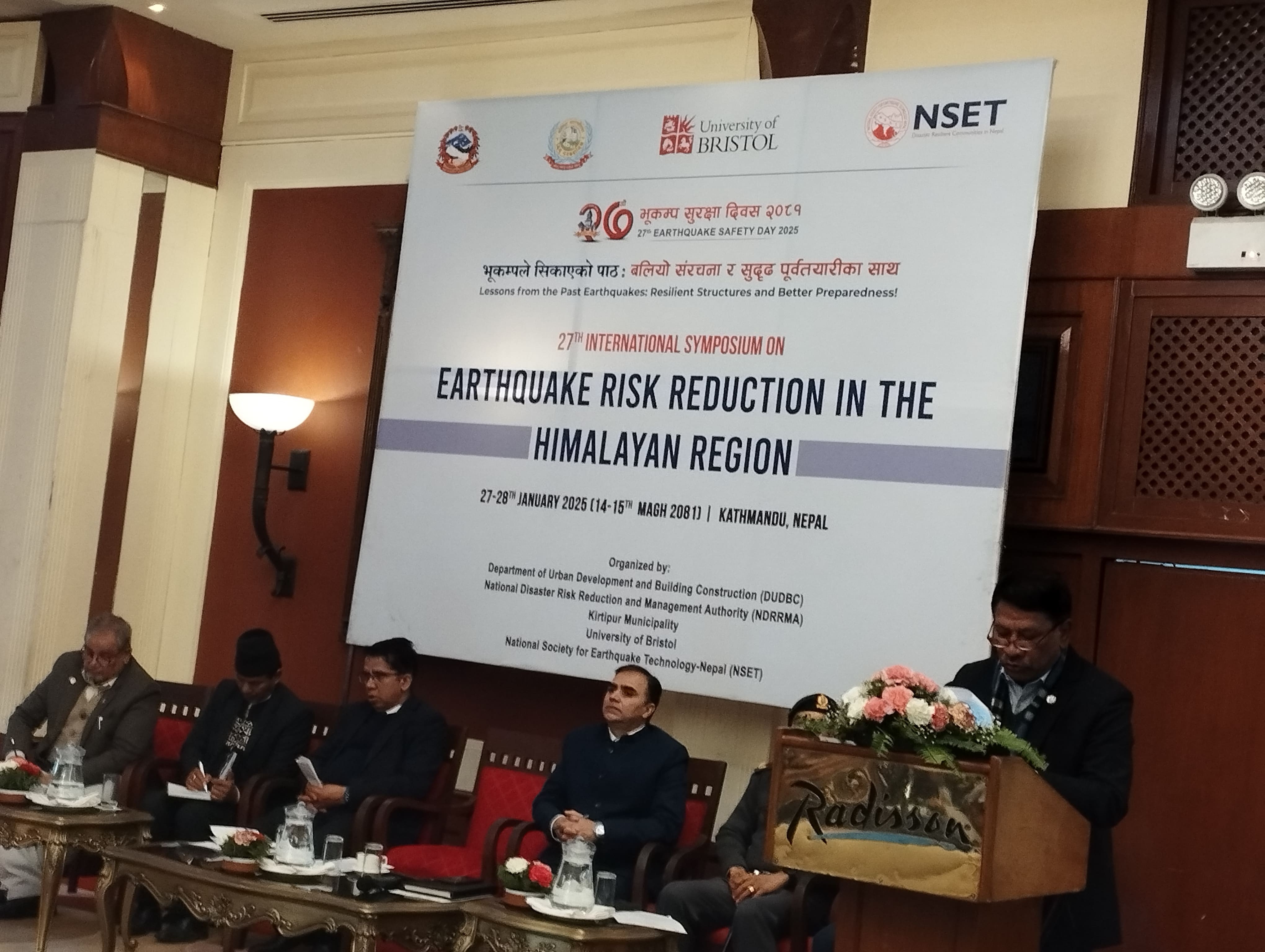Kathmandu, January 27 – The 27th International Symposium on "Earthquake Risk Reduction in the Himalayan Region" commenced today in Kathmandu as part of the 27th Earthquake Safety Day 2025. The two-day event (January 27–28) is being organized by the Department of Urban Development and Building Construction (DUDBC), the National Disaster Risk Reduction and Management Authority (NDRRMA), Kirtipur Municipality, the University of Bristol, and the National Society for Earthquake Technology-Nepal (NSET).
The theme of this year’s symposium, "Lessons from the Past Earthquakes: Resilient Structures and Better Preparedness," underscores the importance of learning from previous disasters to develop sustainable and disaster-resilient infrastructure.
The event brings together experts, policymakers, researchers, and local authorities to discuss strategies for minimizing the impacts of earthquakes in the Himalayan region. The focus is on promoting adherence to the National Building Code, raising public awareness about earthquake-resistant construction, and formulating risk-sensitive land use policies.
Deputy Prime Minister and Urban Development Minister Prakash Man Singh, addressing the symposium, emphasized the need to ensure resilient construction practices and the collective responsibility of communities, governments, and international stakeholders in disaster preparedness. He reiterated the necessity of collaboration to safeguard lives and property in a region prone to frequent seismic activity.
The program includes panel discussions, presentations, and exhibitions that highlight advancements in earthquake-resistant technologies, disaster management practices, and case studies from Nepal and other earthquake-prone regions.
Organizers and participants aim to advance earthquake risk reduction measures and foster a culture of preparedness, ensuring that communities in the Himalayan region can withstand future seismic challenges.